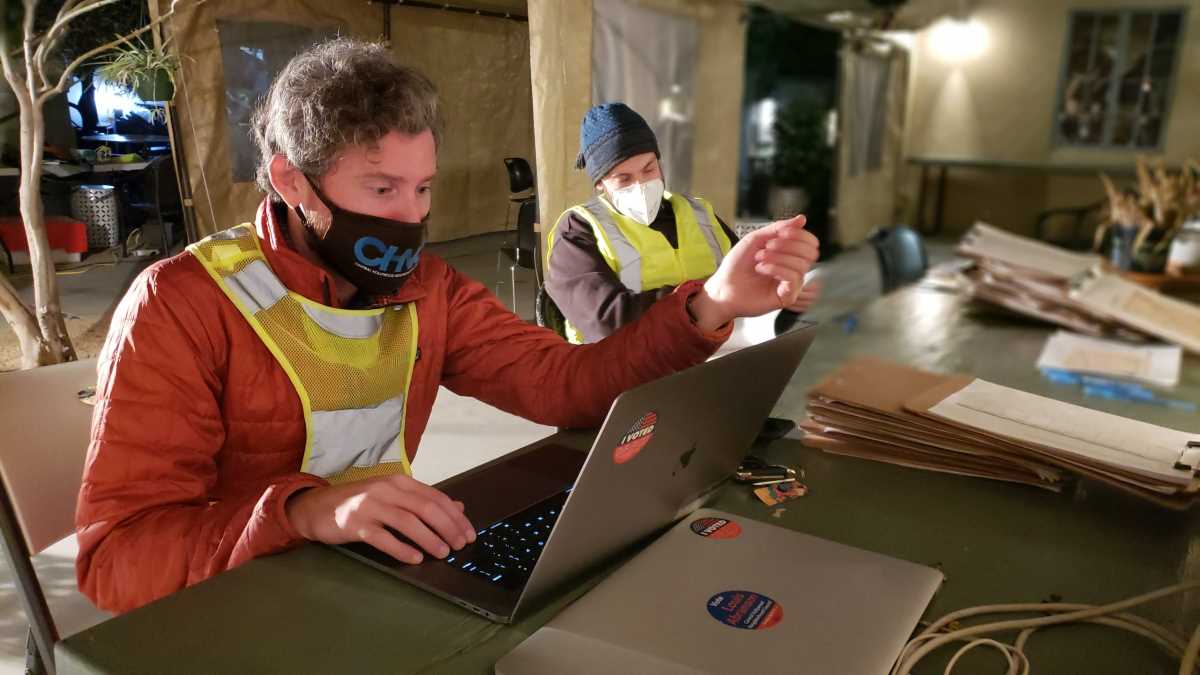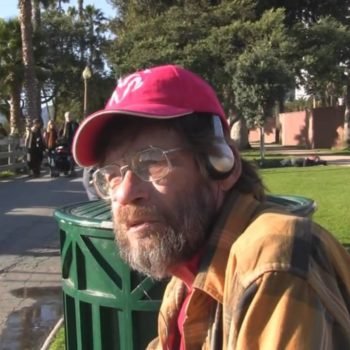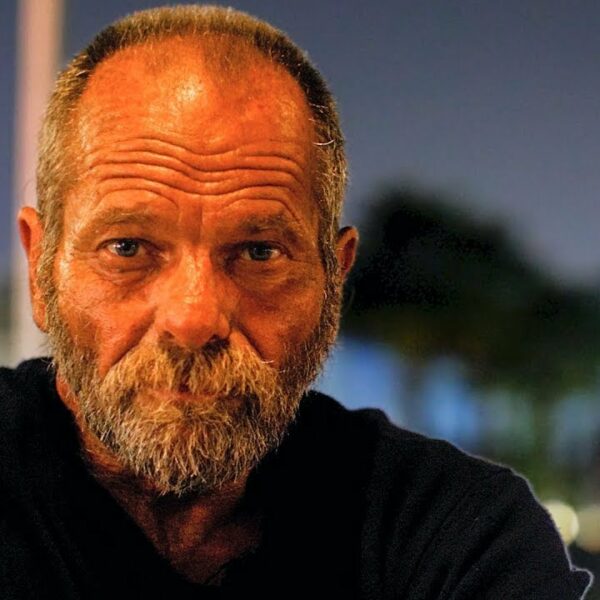Volunteer-led Neighborhood Homeless Counts Are Bringing Communities Together in Los Angeles
When the Los Angeles Homeless Services Authority (LAHSA) canceled its 2021 homeless count due to COVID safety concerns, many communities were disappointed. Louis Abramson, a member of the Central Hollywood Neighborhood Council, was particularly frustrated.
“We have 19,000 stakeholders, and as of the last official count, something like 550 were unhoused,” said Abramson. “In order for residents to understand how many people there are, for service providers to understand the funding they’re looking for, we need a data point.”
Others in Hollywood shared his frustrations.
“Data matters to us, data matters to stakeholders, from the person we’re counting up to the mayor’s office. In such a challenging year, it was really important to not miss a count,” said Jackie Vorhauer, Director of Development and External Affairs at The Center, a service provider in Hollywood.
Abramson and Vorhauer are part of Hollywood 4WRD, a coalition of community organizations, service providers, businesses, and individuals focused on homelessness. They quickly hatched a plan.
“We were at a Hollywood 4WRD meeting where we have a lot of like-minded folks and were like ‘let’s do it,'” said Vorhauer. “The whole Hollywood 4WRD community came together and got on a zoom, and said ‘ok how do we do this?'”
The most immediate concern was COVID safety.
The group quickly came up with a solution: having groups of volunteers from the same “COVID pods” counting census tracts by car. While in years past the count had been done on foot, this approach offered an easy way to minimize contact. Volunteers could drive up, get their materials through a car window, count their tract, and return their results without ever leaving the car.
This choice to rely on existing COVID pods meant that families participated together. The safety of the car made parents feel comfortable bringing their young children along to learn more about homelessness.
“There’s an educational component for these kids who see homelessness in their community,” said Vorhauer. “At such a young age, they were able to participate in a meaningful way and a safe way, and I think in a memorable way.”
COVID also required a different approach to training.
Rather than convening volunteers in a large space the night of the count, trainings were conducted the week before via video call. Margaret Ecker, who participated in several community counts, said she prefers this approach.
“We showed up prepared and went right to work because we’d already been trained, we’d had our questions answered, and we had the division of labor ironed out,” said Ecker.
While organizers were initially concerned about turnout, “we found there was a real hunger to do something, so we had more than enough volunteers, which actually enabled us to do some more rigorous analysis,” said Brian Kohan, Hollywood co-lead for SELAH, a volunteer organization focused on homelessness.

Organizers set up a “drive through lane” in The Center’s parking lot to distribute counting materials. Photo Courtesy of The Center In Hollywood/Hollywood4WRD
With so many volunteers, the Hollywood account was, in some ways, able to go even further than the official count. “Every single census tract was counted by two or three independent teams. We have a crosscheck that’s unprecedented,” said Abramson. “We don’t have to guess, we have the data from two different counters. And when you compare them, they agree.”
The Hollywood team also wanted to make sure that their process was reproducible.
“We have to be focused on ‘this works for us, but how can it be replicable for someone else?'” said Vorhauer. “We don’t have to be the ones running it, but how can we empower others, give them the tools to do what’s right in their city, their town?”
This focus on repeatability paid off, as other neighborhoods emulated Hollywood’s model. Volunteers in Mid-City, Koreatown, and Eagle Rock repurposed their approach in their backyards. [Disclosure: the author of this piece participated in the Koreatown count.] You can find the results from all four community counts here.
Organizers of the counts expected to see an increase in homelessness. However, the total number of individuals was flat or down.
“It surprised me because you could see the signal of more built structures and makeshift dwellings, even though the number of total individuals went down,” said Abramson. “The visuals were more salient. In many communities, there were more tents.”
Analysts attributed this change to two factors:
- the city reducing its enforcement of anti-camping laws, and
- service providers handing out tents to allow better social distancing among their clients
Abramson cautions that we shouldn’t get too excited about a modest decrease in the population of unsheltered residents. Due to the pandemic, those who remained on the streets faced deteriorating conditions.
So there are 100 fewer homeless people, does that mean homelessness got better?” Abramson asks. “Restaurants closed, food and bathroom access, overdose deaths way up. What does making progress on homelessness mean? It’s about human lives.”
While getting the data was an essential part of the count, it also created community empowerment. “There is a little bit of happiness, inspiration in going rogue, in being able to own this and do it ourselves,” said Ecker. “We were highly motivated to do it in the first place using valid but safe techniques.”
The organizers took pride in bringing together so many stakeholders from their community, including lay residents, service providers, community organizations, and local businesses.
“You have to have community if you’re going to end homelessness,” said Vorhauer. “We don’t want to work in a silo. This is all about collaboration from residents, to businesses, to nonprofits, to faith groups, to grassroots orgs, and to our elected officials. We can’t work in a silo if we’re going to effectively address homelessness.”
For volunteers, participating in the count provided a powerful experience of empathy.
“These counts really did show that there’s a hunger out there among regular folks,” said Kohan. “Most people look out their window and see a humanitarian crisis, and they want to do something about it. It’s hard to know what to do, but the count provided an outlet.”
To Vorhauer, the count reflected the approach homeless services providers need to take to be effective.
“Homeless services means constantly problem solving and constantly finding a way to get something done when people have been told it’s not possible,” said Vorhauer.
“We don’t have to wait for the solution or wait for someone to say go. Sometimes we just need to do it.”













